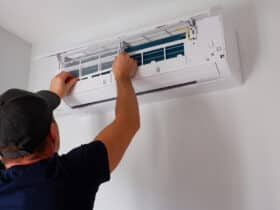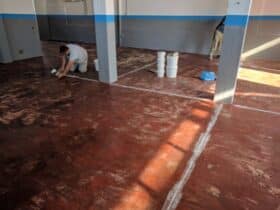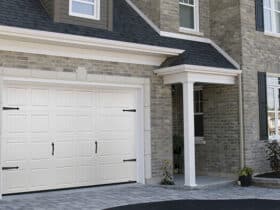Practicing sustainability at home offers several benefits. Not only do intentional green efforts help protect the environment, but they also hold the potential for cost savings.
Regardless of your existing heat source, there are many things you can do to make your home heating a little more eco-friendly. Here are six practical tips for sustainable home heating.
Schedule Annual Furnace Tune-Ups
Scheduling home maintenance tasks might not seem like a positive step toward a sustainable lifestyle, but it does make a difference. Over time, the general wear and tear on your furnace will cause it to become less efficient. As such, it will require more power to produce less heat.
During an annual tune-up, the technician will tighten loose screws, clean the connectors and blowers, and ensure everything is in working order for the winter. They can also tell you if you need a furnace repair and provide guidance on the cost and process.
Consider scheduling your annual tune-up visit for the late summer or early fall, depending on your area. This strategy will help you get ahead of the late fall rush and ensure everything runs smoothly before the first cold day of the season.
Use Residual Heat
There’s nothing like cooking a hearty supper or baking a delicious treat to warm your spirits during the winter— there’s also no shame in reheating takeout in the oven when you can’t be bothered. The key thing to remember is to leave your oven open afterward.
Ovens are designed to hold heat in, so your kitchen doesn’t reach 400 degrees while you cook. That means when you’re done cooking and you close the oven, that leftover heat stays inside and accomplishes nothing.
Leave your oven door slightly ajar after cooking (or reheating takeout) and use that residual heat to warm your home without any extra energy consumption. It won’t be enough to heat your entire house for the winter, but it will make the most of the energy you’re already consuming.
Use Window and Draft Covers
Experts estimate that windows are responsible for 25-30% of heat loss during the winter. That means if you spend $2000 on home heating oil each winter, $500 of that is just seeping out into the cold. If you have newer, energy-efficient windows, this likely isn’t as great a concern as if you have an older home.
Start by checking your windows and doors for drafts, and add caulking or weather stripping as needed. Consider investing in a cellophane window sealing kit for your windows or thermal curtains to help block the draft and keep heat in your home.
Consider Localized Climate Control
Most people use some rooms more than others. If you find yourself in this group, consider installing localized climate control in certain areas of the house while keeping your core temperature cooler.
A mini-split is a great way to add localized cooling or heating in common areas in the house. Conversely, you might use an energy-efficient space heater in the home office throughout the day as you work from home.
Use a Smart Thermostat
Smart thermostats allow you to program your furnace to heat your home when it matters the most. In other words, your home will drop a few degrees when everyone is asleep (which is better for your sleep hygiene anyway) and when you’re at work.
Modern smart thermostats, like the Nest, even provide insights into your consumption and offer sustainability tips to further curb your heating costs and carbon footprint.
Monitor Your Home’s Humidity Levels
If you live in a coastal area, you’re likely familiar with the phrase, “it’s not the heat; it’s the humidity that gets you.” Humidity alters your perception of the temperature, making hot air feel hotter and cold air feel colder.
If you notice excess moisture in your home, consider using a dehumidifier to help regulate the climate. This issue is often caused by a faulty furnace or HVAC system.
With these practical tips, you can keep your home warm while positively impacting the environment.















